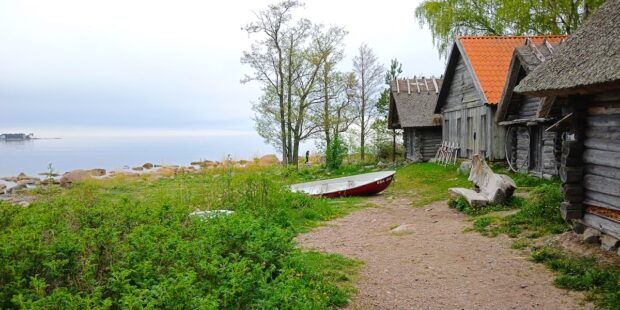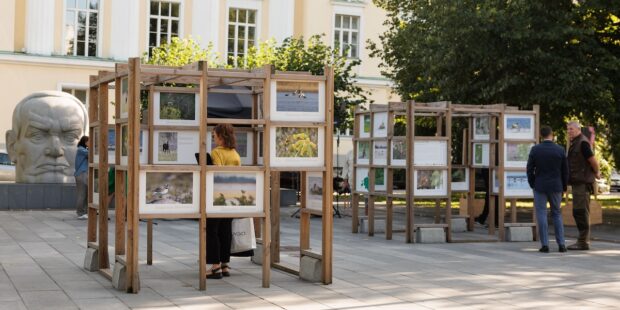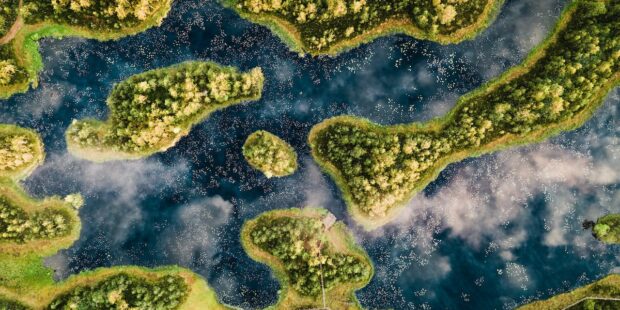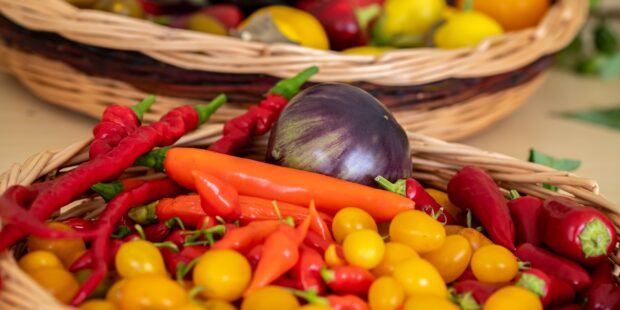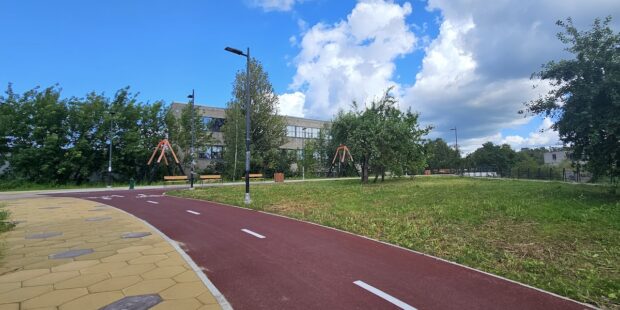A summer trip to Estonian nature
Text Mikko Virta Photos Priidu Saart, Mikko Virta, Andrei Chertkov, Hetkeline
 Estonia is the promised land of lighthouses. There are especially handsome lighthouses on the west coast of the country. One of the most popular destinations is Kihnu's handsome lighthouse.
Estonia is the promised land of lighthouses. There are especially handsome lighthouses on the west coast of the country. One of the most popular destinations is Kihnu's handsome lighthouse.
The Estonian Amazon invites you to paddle
Soomaa National Park has sometimes been called the Amazon of Estonia. The nickname is justified, because the rivers crossing through Soomaa with their giant oaks and green meadows form a lush whole.
The best way to get to know Soomaa’s river scenery is from a canoe. A canoe trip on a dusky summer evening is a wonderful experience. The big oak trees stretch their branches over the rivers and the bird concert is at its best. With good luck, you can see a beautifully coloured kingfisher or a beaver frolicking on the riverbank.
You can even go on a canoe trip with the whole family. Tourism entrepreneurs in Soomaa rent canoes and give good tips for canoeing trips. A guided tour is the best way to get to know the secrets of Soomaa. In the river landscapes, you can also come across canoes carved from a single aspen tree. These are a symbol of Soomaa, and a tradition that is now on the UNESCO World Heritage List.
In Soomaa, you should also go hiking on the trails that run through the swamps of the national park. In the summer heat, it is a refreshing experience to take a dip in the water.

For a bike trip to the small islands
There are many small islands in Estonia that are convenient to explore by bicycle. One of the most famous islands is Kihnu, located near Pärnu. Known for its traditional culture, the approximately seven-kilometre long island is easy to explore by bike, which can be rented from the island’s port. During the day, you will have time to visit the most important attractions in Kihnu, from the lighthouse to the museum and village shop.
Vormsi, located west of Haapsalu, is also a nice day trip destination. From the island’s port, you can rent a bike and pedal around the island. If you are interested in nature, you should visit the nature trail that runs through the juniper forest of Rumpo, where you can enjoy landscapes that you cannot experience in many other countries. Vormsi is known for its Estonian-Swedish history, which can be explored in the interesting museum in the village of Sviby. The biggest village on the island, Hullo, has good services in the summer, so you can spend several days on the island.
Among the other small islands of Estonia, Muhu and Prangli can also be easily explored by bicycle.
How to get there? Kihnu can be reached from Munalaid harbour a few times a day. In summer, there is also a boat connection from Pärnu. You can reach Vormsi from the port of Rohuküla. You can also take your own bicycle on the ferry.
For more information about bike routes visit: www.visitestonia.com

On foot from Tallinn to Latvia
In Estonia, you can hike along a marked route from Tallinn to Latvia. The Ranniku hiking trail, opened in 2019, goes as its name suggests, from Tallinn following the coast to the Latvian border at Ikla. Although the route does not go along the coastline the entire way, there are wonderful stretches of beach along it. The finest beach spots are west of Tallinn in the region of Laulasmaa. Also south of Pärnu, in Kabli, you can go hiking along the beautiful sandy beach.
The route is made possible by Estonia’s unique everyman’s right, according to which everyone has the right to walk on beaches without obstacles.
The hiking trail along the coast continues in Latvia and Lithuania, so if you want, you can hike through the entire Baltic. Another route starting from Tallinn to Latvia runs through inland forests and Peipsi lake to the Latvian border in southern Estonia. The Metsä hiking trail is 720 kilometers long in Estonia. The route also continues on through Latvia and Lithuania.
There are already several hiking trails of the Estonian State Forest Management, or RMK. Hundreds of kilometers of trails criss-cross Estonia, so if you want, you can hike from, for example, the shores of the Gulf of Finland in Lahemaa to Karula National Park southern Estonia. The longest route has a length of more than 800 kilometers. The newest of the routes is a more than 200-kilometre-long hiking trail around Hiiumaa.
You can find more information about the hiking trails at: www.baltictrails.eu, maaturism.ee, and loodusegakoos.ee
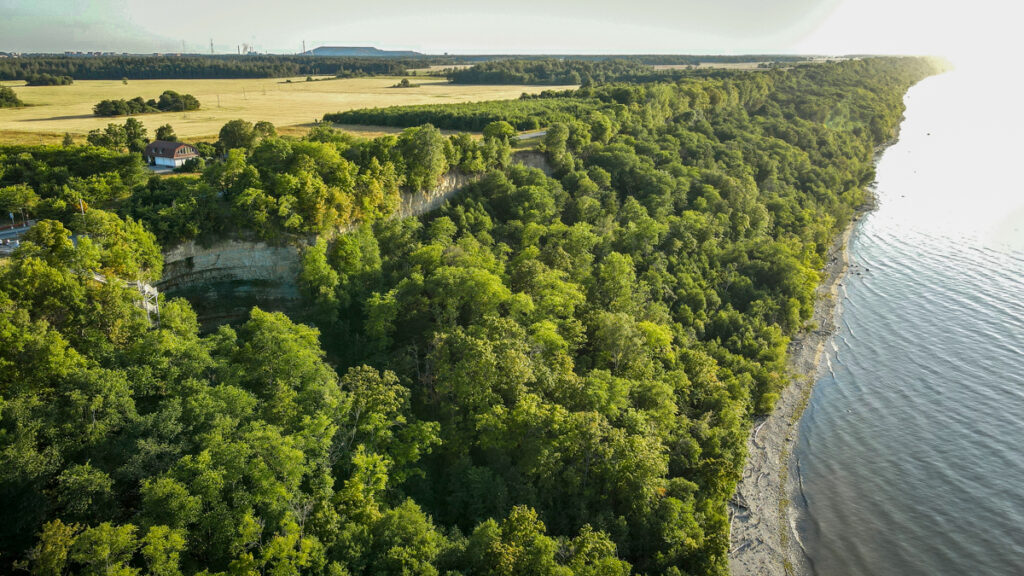
Admire the falls and cliffs
The best way to get an idea of the differences between Estonian and Finnish landscapes is to go to one of the coastal cliffs of Northern Estonia. From Tallinn, it is convenient to take a day trip to, for example, to the cliffs at Pakri and Türisalu. Both rise more than twenty meters vertically from the Gulf of Finland.
Estonia’s highest cliffs are located in eastern Estonia between Saka and Toila, where a single cliff continues for twenty kilometers. At Ontika, the cliff rises no less than 55 meters above sea level. The landscapes at Ontika are definitely worth seeing.
Near Ontika is Valaste waterfall. The more than 30-meter-high waterfall is a beautiful sight, especially in the spring. Valaste is suitable as an excursion destination for the whole family, because there is also plenty to see at the foot of the cliff. The stairs lead down to a forest locals refer to as a jungle and to the shores of the Gulf of Finland. Those with a keen eye can find hundreds of millions of year-old fossils in the rocks on the beach.
There are two other impressive waterfalls on the northern coast: Jägala and Keila. They are both among the most popular natural attractions in Estonia.
The land of lighthouses
Estonia is the promised land of lighthouses. There are 11 lighthouses open to the public. You can easily see most of them in a trip lasting just a few days, because almost all of the lighthouses that are open to the public are located in Western Estonia.
A lighthouse fan’s dream destination is Hiiumaa, which has no less than three handsome lighthouses: Kõpu, Ristna and Tahkuna. The majestic Kõpu is one of the world’s oldest lighthouses still in operation.
From Hiiumaa, it is convenient to continue the lighthouse tour to Saaremaa, where you can get to know the lighthouses in Sõrve and Vilsandi.
On a Tallinn vacation, it is easy to take a day trip to the Pakri lighthouse, located north of Paldiski, which is the highest lighthouse in Estonia. At the same time, you can admire the beautiful beach cliffs.
Six of Estonia’s lighthouses have been selected among the world’s 100 historically most valuable lighthouses. The lighthouses that are open to the public usually have a small entrance fee.

Southern hills and smoke saunas
The region considered by many to be the most beautiful in Estonia is located in Haanjamaa, south of the city of Võru. Hills, lakes and cultural landscapes create a whole that cannot be experienced anywhere else in the country.
The highest peak in the Baltics is Munamägi (318 m) in the Haanja nature park. The tower on the hill offers a view of the rolling forest landscape. Munamägi tower is one of the most important tourist attractions in Estonia, you can also take an elevator to its top.
Rõuge’s bird’s nest-like observation tower, on the other hand, is guaranteed to be the ost unique in Estonia. At the top of the tower are two nests, one of which contains a huge glass egg. Rõuge village is also a nice destination, where you can take a dip in Estonia’s deepest lake and hike in the beautiful scenery of Ööbikuoru.
Võru county is also known for its smoke saunas, which tourists are welcome to visit. You can conveniently book a smoke sauna on the Võrumaa tourism website. In 2014, the local smoke sauna tradition entered the UNESCO World Heritage List.
To learn more about this and similar topicsEstonian Islands Estonian Lighthouses Hiiumaa Hiking in Estonia Saaremaa Soomaa Võru

